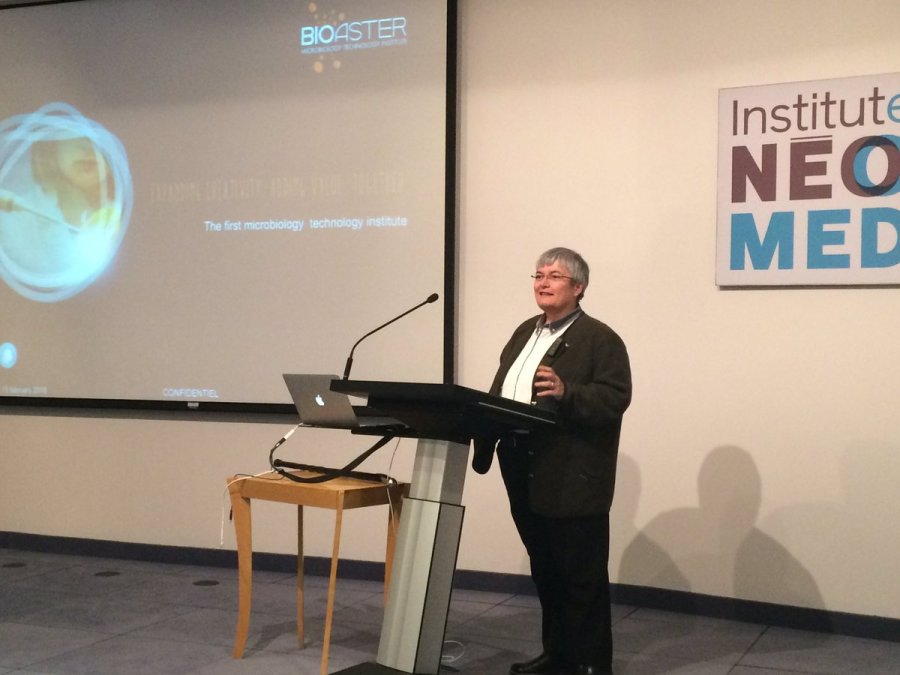(Audio-EN) Bioaster, Neomed : Same Objective, Similar Approach, Some Differences
Montreal (QUEBEC) – Nathalie Garçon is the CEO and CSO of Bioaster, a French technological research institute dedicated to work on infectious diseases and microbiology sponsored jointly by Lyonbiopôle and l’institut Pasteur. On Thursday the 25th of February, she gave a lecture at the Neomed Institute wich is summarized in this interview. She explains why the Bioaster model, based on a new form of public and private partnership, is so unique: « It leads interdisciplinary activities of R&D in an active position of being the interface between fundamental research and industrialisation. » It is a way, she adds, « to assure an optimal chain of research and innovation in infectiology and microbiology and to open new horizons in the understanding in the comprehension of the impact of intestinal microbiota on health. » Half of Bioaster’s people are from academia, the other half from industry. One of the institute’s major roles is to transmit knowledge from academia into industrial solutions for the patient by providing the technological part of the project. «We have state-of-the-art equipment that is never all together on the same site and it supported by the workers at Bioaster; compared to Neomed were the institute hosts the technology that is provided by biotech companies.» What is also unique to the Bioaster model, is that the government matches half of the expenses that it spends on collaborative projects, which is a way to reduce the risks for the industry clients. Nathalie Garçon also explains how to optimally manage intellectual property in this type of structure : «It is based on pretty simple principals. Industry needs the IP to exploit a certification of the property that may have been created during the project. On the other hand, Bioaster needs to be sure to use it outside the scope of the project that was conducted with the private partner and academia wants to be able to use it for research purposes in order to increase knowledge in their field of expertise. Each of the collaborators can access the IP and use it depending on what they need and want to do.» She concludes by saying the value of a project is not necessarily in the IP, it is also in the know-how that it generated.
